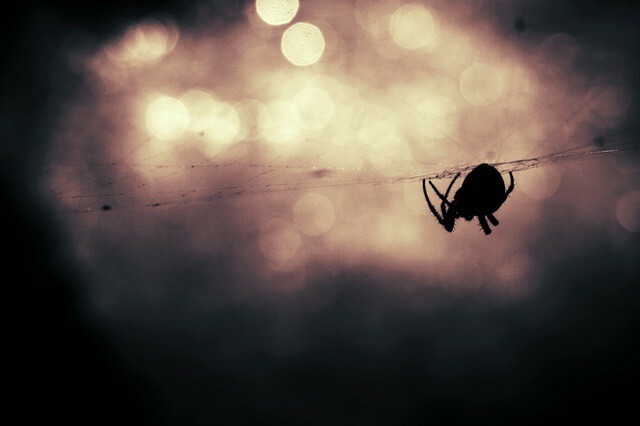Types of Phobias: Exploring Fear Disorders
Phobias have long been part of the Western collective unconscious. Even those people who have never experienced a phobia in any of its forms, know that the human being is capable of developing a irrational fear to practically everything that can be perceived or imagined: clowns, spiders, concrete colors, etc. But... Wouldn't it be more appropriate to speak of types of phobias than of "phobias" as if they were a single unit?
This is precisely what makes phobias such an interesting topic: there are as many of them as there are elements in our habitat and our cultures. That is, they are practically infinite, and it is always surprising to see to what extent people can exist who at a certain moment of their life develop an atrocious fear of things, ideas or living beings that can hardly be described as dangerous. For example in this article you have some examples of weird phobias.
What are the types of phobias that exist?
TAnta variety makes it difficult to make a "mind map" about phobias and know which are the most common
. Actually, it is impossible to have access to a totally exhaustive and detailed classification on phobias, because the variety of these is quite possibly infinite, and therefore it is useless to try to create an exhaustive classification with all types of phobias: there will always be some that will come out of the schemes. Anything or thought is prone to generating irrational fear under certain circumstances.However, they can be traced general classifications on the types of phobias. They may not be perfect or totally exhaustive, but at least they are useful and give you a rough idea of how these irrational fears are often expressed. Thus, a classification of classes of phobias that includes the most common could be the one we offer you below.
1. Specific phobias
The types of phobias that belong to the category of specific phobias have in common that what generates fear is a specific situation, object or being. That is, something that can be easily identified and separated from the rest. In addition, the DSM IV manual distinguishes between five subtypes of specific phobias: those related to blood and injections, phobias triggered by animals, those related to natural environments, situational phobias and the category "other phobias specific ".
Some examples of rare disorders that can be included in this type of phobia are ligirophobia, or fear of loud sounds, crystallophobia, or fear of crystals, or cardiophobia, or fear of vascular accidents such as heart attacks However, in the following lines we will focus on the most common and well-known phobias.
1.1. Phobia of animals, or zoophobia
Here would enter all those phobias related to living things with a worse image, such as spiders or snakes, but technically any one of those types of phobias whose triggering stimulus can be included in this category be it an animal, be it a hummingbird, a raccoon, a crab or any of the possibilities that the evolution.
Three types of specific phobias in this category that deserve an honorable mention for how common they are are: ophidiophobia, arachnophobia and cynophobia, snake phobia, spider phobia and dog phobia, respectively. It may be useful in certain cases to have a certain respect for these animals for their ability to harm us, but from then spiders and dogs are numerous enough to make being too afraid of them can be very counterproductive.

Other examples of phobia of animals are found in anxiety disorders such as musophobia, or fear of mice, as well as in hypophobia or scolekiphobia.
1.2. Blood phobia, or hematophobia
One of the great classics and that, according to some studies, seems one of the most common types of phobias. However, blood phobia has a particularity that distinguishes it from the rest: it often leads to fainting. You can read more about this topic at the article dedicated to this phenomenon.
1.3. Natural environment phobias
1.3.1. Acrophobia, or fear of heights
The fact of being at more or less height with respect to the place that we perceive as the "ground" or base of the place where we have climbed is clearly related to the danger to which we are exposed. The higher the altitude, the greater the risk of dying in the event of a fall. However, sometimes fear of heights can be so severe and disabling that it can be considered a type of phobia related to the natural environment. This is especially relevant if we take into account that sudden height changes are frequent in cities, especially in buildings.
1.3.2. Astraphobia, or fear of storms
Storms are usually associated with quite a few things that can be quite scary, and when, in addition to a traumatic component related to past experiences, the existence of astraphobia is not strange at all. This is a type of phobia that can cause special problems, because the noise of storms goes through walls and makes calming down difficult.

1.3.3. Pluviophobia, fear of rain
One of the strangest types of phobias, since in this case the phobic stimulus is the rain itself, an element that hardly poses a real risk beyond floods. However, it is believed that being a relatively frequent meteorological phenomenon in many parts of the world, it can be associated with unpleasant or traumatic events with relative ease.
1.4. Situation phobias
1.4.1. Aerophobia, or fear of flying in airplanes
Aircraft phobia is possibly the most common situational phobia. Not only is there the component of fear of dying in the event that the surrounding machinery fails, but also the being in a small space with lots of strangers crowded together makes stress difficult to reduce.
1.4.2. Claustrophobia, fear of closed spaces
Narrow places or with walls very close to each other generate a feeling of anguish in many people, but they can also cause some to panic. Claustrophobia is one of the most well-known types of phobia due to the severity of fearing this type of spaces in societies in which a large part of life takes place within buildings and enclosures closed.
1.4.3. Amaxophobia, or fear of driving
The irrational fear of driving is one of the unpleasant surprises that many people discover when they have to perform their first practical car lessons (the other surprise is the estimate of the money that will be spent on they).
But amaxophobia is especially dangerous among all types of phobias, because it prevents prudent driving and puts your own life and that of others at risk. In fact, within the category of specific phobias, it is one of the most frequent reasons for consultation in psychotherapy cabinets. You can read more about amaxophobia at this article.

2. Social phobia
A category of types of phobias different from the one we have seen so far is the one that refers to social interaction. Social phobias can be very varied, appear only in certain contexts and not in others and be based on different reasons, such as fear of attacks that may be triggered or fear of marginalization.
One of the frequent symptoms among people who suffer from social phobia is erythrophobia, I know the fear of blushing. On the other hand, this is one of the types of phobias in which catastrophic thoughts are more common, since the anticipation of situations that are very embarrassing or involve a significant erosion of the public image of oneself: hesitancy when speaking, falls, inability to look at the eyes... The anticipation of this causes the level of anxiety to rise, which is why the phenomenon known as self-fulfilling prophecy occurs.
Social phobia can become highly disabling, because it greatly limits the options a person has when it comes to making friends, asking for help, negotiating, looking for work, etc.
You can delve into the causes, symptoms and treatments for social phobia by reading this article.
Bibliographic references:
- Albano, A. (2003). Treatment of social anxiety disorder. In Reinecke, M.A. Dattilio, F.M., Freeman A. (Eds.), Cognitive therapy with children and adolescents: A casebook for clinical practice (pp. 128 - 161). New York: Guilford Press.
- American Psychiatric Association (2013), Diagnostic and Statistical Manual of Mental Disorders (5th ed.), Arlington: American Psychiatric Publishing.
- Cavallo, V. (1998). International Handbook of Cognitive and Behavioral Treatments for Psychological Disorders. Pergamon. pp. 5 - 6.
- Edmund J. B. (2005). The Anxiety & Phobia Workbook, 4th ed. New Harbinger Publications.
- Kendall, P.C., Aschenbrand, S.G., Hudson, J.L. (2003). Child-focused treatment of anxiety. In A. AND. Kazdin, J.R. Weisz (Eds.), Evidence-based psychotherapies for children and adolescents (pp. 81 - 100). New York: Guilford Press.
- Perugi, G; Frare, F; Toni, C (2007). Diagnosis and treatment of agoraphobia with panic disorder. CNS Drugs. 21 (9): pp. 741 - 64.
- Tillfors, M. (2003). "Why do some individuals develop social phobia? A review with emphasis on the neurobiological influences ". Nord J Psychiatry. 58 (4).
